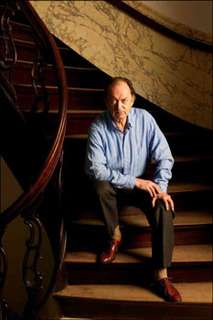|
Back
An Uneven Viennese Evening New York
Carnegie Hall
09/29/2010 -
Ludwig van Beethoven: Piano Concerto No. 1 in C Major, opus 15 – Symphony No. 7 in A Major, opus 92
Lang Lang (piano)
Vienna Philharmonic Orchestra, Nikolaus Harnoncourt (conductor)

N. Harnoncourt (© Marco Borggreve)
Carnegie Hall celebrated the opening of its 120th season last night with the first of several concerts by the venerable Vienna Philharmonic, widely regarded as the world’s finest orchestra. Reeling from the Metropolitan Opera’s stale opening night new production of Wagner’s Das Rheingold two evenings earlier, musical New York hoped the Vienna players would liven up the early season. Despite the gorgeous floral arrangements that decorated the stage, it was not to be.
Nikolaus Harnoncourt led stable, steady Beethoven performances, but under his direction Vienna’s venerable orchestra sounded almost dull. The first part of the concert, featuring the young pianist Lang Lang in the composer’s Piano Concerto No. 1, reflected the odd mismatch of a stalwart conductor of eighty with a soloist of not quite thirty who is known for his dramatic flair and idiosyncratic antics. The styles did not complement each other. Lang’s playing began almost daintily, reflecting a Mozartean sound that did little for Beethoven. As the piece wore on, his playing became sharper and more aggressive, passing over many of the subtleties that the orchestra was unable to harmonize with his erratic playing. Lang’s style is suited to more dramatic music – he played Liszt’s Piano Concerto No. 1 with verve at the National Symphony’s opening a few days before and did well in his bravura encore of the finale from Prokofiev’s Seventh Sonata, -- but the post-Beethoven intermission resounded with audience complaints of frayed nerves and upset sensibilities.
The second part was entirely taken up by a sturdier and somewhat more enjoyable playing of Beethoven’s Seventh Symphony. It is a stirring work, which Wagner famously called “the apotheosis of dance.” Harnoncourt took the Vienna Philharmonic through the motions with sturdy confidence, but only the well known allegretto movement was really affecting. There was an organic quality to the rest of the work, but the really inspirational playing might have to await Gustavo Dudamel’s arrival on the podium later in the run of concerts.
Paul du Quenoy
|